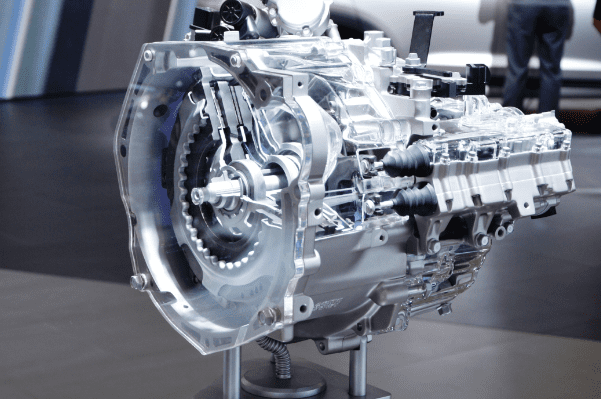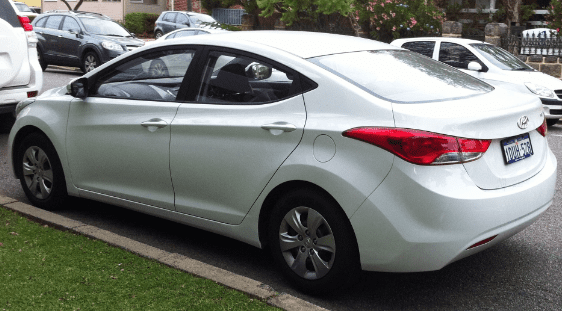[100% Fixed] Hyundai Dual Clutch Transmission Problems!
Last Updated on October 16, 2023 by Robert Wilson
Hyundai’s Dual Clutch Transmission (DCT) is a new technology that is having some growing pains.
Some Hyundai owners have been complaining about transmission problems, specifically with the way the DCT shifts gears. There have been reports of the transmission jerking, hesitating and even “shuddering.”
These issues are causing concern for Hyundai owners, especially since the DCT is a new technology and there is no easy fix if something goes wrong.
Hyundai is aware of the problem and has issued a service bulletin to dealerships outlining the symptoms and possible causes.

The bulletin recommends that dealers check for software updates and perform a “clutch adaptation learn procedure” if they find any issues.
Hyundai has also extended the warranty on the DCT to 10 years/120,000 miles to help alleviate concerns.
If you own a Hyundai with a dual clutch transmission, you may have faced those problems. These transmissions are designed to be very efficient, but they can sometimes have issues.
Hyundai DCT Recalls
- Recall affects 2021-22 Hyundai models: Santa Fe, Sonata, Veloster N, 2022 Elantra N, Kona N, Santa Cruz.
- Issue with high-pressure oil pump causing transmission malfunction.
- Clutches disengage automatically upon oil-pump fault.
- Affected cars may enter fail-safe mode and lose propulsion 20-30 seconds later.
- 61,861 Hyundai vehicles in the US impacted.
- Recall spans cars from Hyundai’s Alabama and South Korea plants.
Read More:
5 Hyundai Santa Cruz Issues (Solved)
8 Common Issues Hyundai Santa Fe
Common Hyundai Dual Clutch Transmission Problems
Here are some of the most common transmission problems that people have reported:

1. Shifting Issues: Some people have complained about shifting issues with their Hyundai dual clutch transmission.

This can be caused by a variety of things, but it is usually due to the clutches not engaging properly. If you are having this issue, it is best to take your car to a mechanic and have them check it out.
2. Leaking Transmission Fluid: Another common problem with the DC transmissions is that they can leak transmission fluid. This can be caused by a variety of things, but it is usually due to a seal that is not functioning properly.
3. Jerky Ride: Some Hyundai Owner have also complained about a jerky ride when they are driving with their dual clutch transmission. This is often caused by the transmission not shifting smoothly or correctly.
Hyundai’s Dual-Clutch Reliability
The reliability of Hyundai’s Dual-Clutch Transmission (DCT) has been a subject of discussion and concern in recent years.

While DCTs can provide a sporty driving experience and improved fuel efficiency, they have faced some reliability issues, and these concerns have affected various Hyundai models equipped with DCTs.
Some common reliability concerns with Hyundai DCTs include:
- Jerkiness in Stop-and-Go Traffic: DCTs can exhibit jerky behavior at low speeds, particularly in heavy traffic conditions, which can lead to a less comfortable driving experience.
- Overheating: Some DCTs have been known to overheat in certain driving conditions, which may result in performance issues or damage to the transmission.
- Clutch Wear: Premature wear of the clutch components can occur, leading to slipping gears and requiring costly repairs.
- Complexity and Repair Costs: DCTs are complex and can be expensive to repair or replace if issues arise.
- Software Updates: Hyundai has issued software updates to address some of the reliability issues with their DCTs, but the effectiveness of these updates can vary.
Read More:
[Top 7 Fixes] Hyundai Palisade Problems
6 Common Hyundai Veloster Problems
It’s important to note that Hyundai, like many automakers, has made efforts to address these issues over time and improve the reliability of their DCTs.
However, potential buyers and current owners should research specific models and their model years for any known transmission-related issues and consider factors like driving habits and maintenance in assessing reliability.
Before purchasing a Hyundai with a DCT or if you currently own one, it’s advisable to stay informed about any recalls, technical service bulletins, or manufacturer recommendations related to your vehicle’s transmission to ensure its reliability and longevity.
Regular maintenance and following manufacturer-recommended service intervals can also help mitigate potential Hyundai DCT problems.
Hyundai Dual Clutch Transmission Fluid Change
Everything to know about Dual Clutch (DC)
A dual clutch transmission (DCT) is a type of automatic transmission or automated manual transmission. It uses two separate clutches for odd and even gear sets. It can seamlessly switch between gears, resulting in fast and smooth gear changes.
DCTs are designed to improve fuel economy and performance over traditional automatic transmissions.
DCTs first appeared in production vehicles in 2003, but they are not yet widely used. Many automakers offer DCTs on high-performance models, including Audi, BMW, Porsche, and Ferrari.
But the technology is slowly trickling down to mainstream models like the Ford Focus and Volkswagen Golf.
Read More:
{Top 6 Fixes} Hyundai Sonata Transmission Problems
[5 Common Issues] Hyundai Elantra Transmission
How does a dual clutch transmission work?

A DCT has two independent clutches that engage odd-numbered gears (1st, 3rd, 5th) on one shaft and even-numbered gears (2nd, 4th 6th) on another shaft.
The two shafts are connected by a hydraulic coupling that allows them to rotate at the same speed.
When one clutch is engaged, the other is disengaged and spinning freely. This allows for very quick shifting because there’s no need to wait for one gear to slow down before engaging the next.
The main benefit of a DCT is its ability to shift gears quickly and smoothly without interrupting power delivery to the wheels—unlike a conventional automatic transmission with a torque converter.
This makes them ideal for high-performance applications where quick shifts are necessary such as racing or off-road driving.
What is Hyundai Dual-Clutch Transmission?
Hyundai’s dual-clutch transmission is a cutting edge technology that offers drivers the best of both worlds: the fuel efficiency of a manual transmission with the convenience of an automatic transmission.
This unique system uses two separate clutches to engage the gears, one for odd-numbered gears and one for even-numbered gears. This allows for quick, seamless shifting between gears without any loss in power or torque.
One of the biggest benefits of Hyundai’s dual-clutch transmission is its fuel efficiency.
Because the system only engages one clutch at a time, there is less friction and drag on the engine which results in better gas mileage.
In fact, tests have shown that vehicles equipped with this type of transmission can get up to 5% better fuel economy than those with traditional automatic transmissions.
Read More:
[Top 5 Issues] Hyundai Equus Problems
[Fixed] Hyundai Tiburon Problems
That means more money in your pocket at the pump! In addition to being more fuel efficient, Hyundai’s dual-clutch transmission also offers quicker acceleration and smoother gear changes.
Since there is no torque converter like there is in an automatic transmission, power is delivered directly from the engine to the wheels much more efficiently.
This makes for a zippier ride as well as increased safety on the road since you’ll be able to respond to sudden traffic changes or obstacles much faster than you would with a conventional automatic transmission.
If you’re looking for a vehicle that offers all the benefits of a manual transmission but without all the hassle, then Hyundai’s dual-clutch transmission is definitely worth considering.
With its excellent fuel economy and performance advantages, it’s sure to provide an enjoyable driving experience whether you’re commuting to work or cruising around town!
Hyundai Tucson Dual Clutch Transmission Problems
Hyundai Tucson owners are reporting significant problems with the vehicle’s dual clutch transmission.
While many modern vehicles utilize this type of transmission, the Tucson appears to be having more issues than most.
Numerous drivers have reported that their vehicle jerks and lurches while driving, making it difficult to control.
FAQs
Is Hyundai DCT Reliable?
Hyundai’s DCT transmission is a reliable option for those looking for an alternative to the traditional automatic transmission.
One of the benefits of the DCT transmission is that it is more fuel efficient than a traditional automatic transmission.
Hyundai’s DCT transmissions are also designed to be more durable, with many components being made from high-strength steel. While Hyundai’s DCT transmission is a reliable option, there are some drawbacks to consider.
One is that it can be noisy when shifting gears, especially at lower speeds. Additionally, the dual clutch design can result in a jerky ride if not properly tuned.
What is the life expectancy of a DCT transmission?
How long a DCT transmission lasts depends on how you drive it. Aggressive acceleration can reduce its lifespan to under 50,000 miles, while gentle acceleration and careful driving can extend clutch life to over 200,000 miles.
Who Makes Hyundai Dual-Clutch Transmission?
Aisin produces a wide variety of automotive components, including transmissions, engines, drivetrains, brakes, and more.
Hyundai began using dual-clutch transmissions from Aisin in 2009 on their Genesis Coupe models. These transmissions are designed to provide smooth shifting and enhanced performance.
What is the Problem With Dual-Clutch Transmission?
Dual clutch transmissions are not without their problems. One common issue is that they can be difficult to shift into reverse.
This is because the transmission relies on hydraulics to engage the clutches, and if there is a problem with the hydraulic system, it can make shifting into reverse difficult or even impossible.
Read More:
[Fixed] Hyundai Genesis Transmission Problems
{7 Common Issues} Hyundai Accent Transmission
Another problem that can occur is known as “shuddering.” This happens when the transmission shifts gears too quickly and violently, causing the car to shake.
It can be extremely jarring and uncomfortable for passengers, and in some cases may even damage the transmission itself.
Hyundai │Service Tips │ Dual Clutch Transmission System
Conclusion
If you own a Hyundai with a dual clutch transmission, you may be experiencing DCT issues on your vehicle.
According to a class action lawsuit, the Hyundai DCT transmissions can slip and jerk, making driving difficult and dangerous.
The lawsuit alleges that Hyundai knew about the problem but did not warn customers or fix it.
If you are having problems with your dual clutch transmission, contact a lawyer to see if you can join the class action lawsuit.


I guess I don’t understand how Hyundai can just play head games with people who have purchased their cars. Since when does a problem everyone has become, that’s normal. So they have turned it into, we know it’s a problem but we made ower money so when you can’t drive it anymore then buy something else. 2017 Hyundai Tuscon. The normal , puts you thru there dealership service department B.s. and more mind games. Just tell it like it is, we being( Hyundai) don’t care.
Hi David!
Yes, you are right on your point. It’s little bit harsh but yeah that’s the truth.
Anyway, thanks for adding value here.
Appreciate your opinion!
Keep visiting.
Thank you.